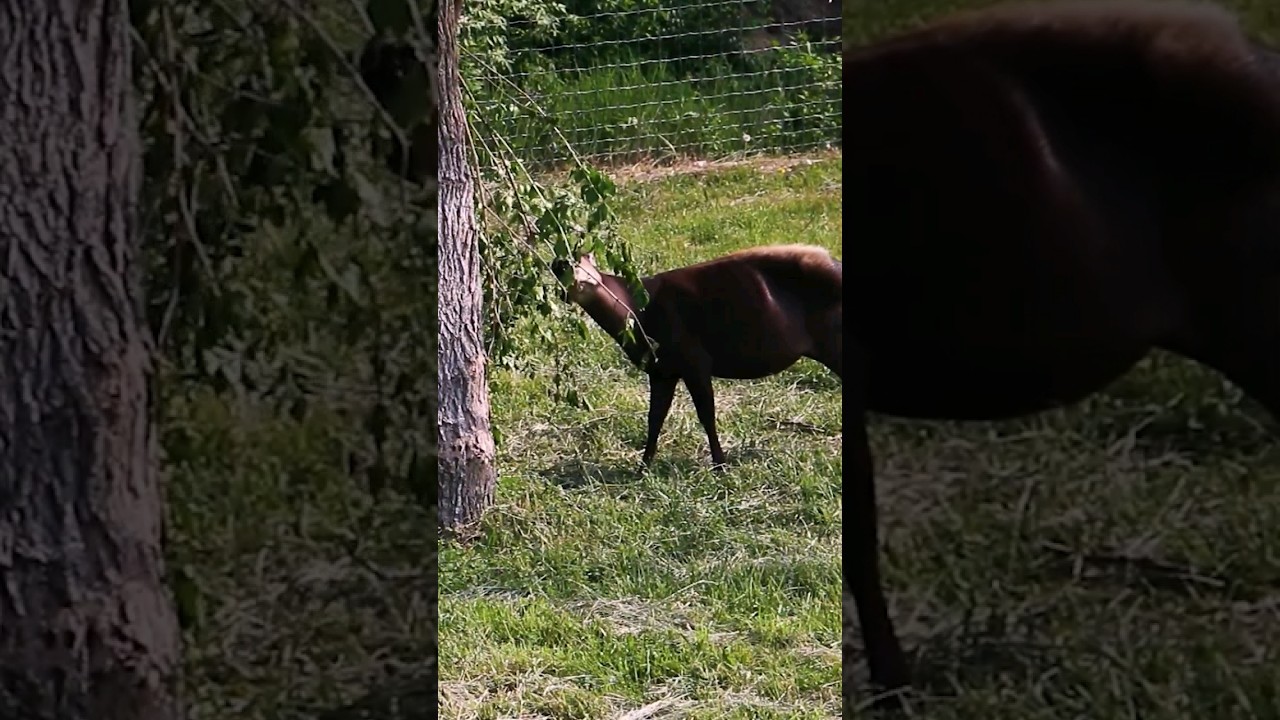Summary:
– Introduction to the Yellow Back Duiker and its habitat
– Physical characteristics and behavior of the Yellow Back Duiker
– Importance of conservation efforts for the Yellow Back Duiker and its ecosystem
– Fun facts about the Yellow Back Duiker
– Connection between Blank Park Zoo and the conservation of the Yellow Back Duiker
The Enigmatic Yellow Back Duiker: A Marvel of the Forest
The world is teeming with various remarkable creatures with unique features and captivating stories. One such creature that often gets overlooked is the Yellow Back Duiker, a species of antelope found in the dense forests of Asia and Africa. Often referred to as the “forest deer,” these small, elusive mammals possess intriguing characteristics that make them truly fascinating. Join us as we embark on a journey to uncover the mysteries behind the Yellow Back Duiker and explore their vital role in their natural habitats.
The Yellow Back Duiker, also known by its scientific name Cephalophus sylviculture, is just one of the many duiker species inhabiting our planet. These small antelopes have adapted to life in the forest, where they navigate through thick vegetation with graceful ease. Their name, “duiker,” is derived from the Afrikaans word meaning “diver” or “diving buck,” referring to their ability to dive into dense foliage for cover.
Its stunning yellowish-golden coat sets the Yellow Back Duiker apart from its counterparts, giving it a radiant glow that genuinely stands out amidst the forest’s shadows. Males, known as bucks, typically possess short, straight horns, while females, referred to as does, lack these prominent features. This sexual dimorphism is a notable characteristic of duikers in general.
These forest-dwelling creatures boast remarkable agility and can move swiftly through the undergrowth, thanks to their slender bodies and sharp hoofed feet. Their low profile and camouflaged coloring blend seamlessly with their surroundings, making them incredibly elusive and difficult to spot in the wild.
The Yellow Back Duiker’s behavior further adds to its allure. They are primarily diurnal, meaning they are most active during the day. However, they may become more nocturnal as a survival strategy in areas where they face significant human disturbances. Despite their relatively small size – with adult males weighing around 55 pounds on average – Yellow Back Duikers are known to be incredibly territorial. They mark their territory using scent glands and vocalizations to assert dominance. Their vocalizations range from short barks and bleats to deep, booming calls, depending on the situation.
Conservation efforts ensure the survival and well-being of the Yellow Back Duiker and its ecosystem. These captivating creatures face numerous threats, including habitat loss due to deforestation, hunting for bushmeat, and the illegal wildlife trade. Large-scale infrastructure development projects have significantly encroached upon their natural habitats, leaving them with limited areas to inhabit. Additionally, the demand for their meat poses a significant threat to their population numbers, as hunters often target them for their delicious and tender meat.
Considering the ecological importance of duikers, it becomes imperative to protect these creatures for their intrinsic value and the cascading effects their presence has on the forest ecosystem. As primary seed dispersers, Yellow Back Duikers play a crucial role in maintaining their habitat’s balance, facilitating plant species’ growth and regeneration. By consuming fruits and depositing intact seeds through their feces, they contribute to forest regeneration and support the diverse flora and fauna that rely on these habitats.
Now, let’s delve into some fascinating facts about the Yellow Back Duiker that will leave you in awe:
1. Rapid Reproduction: Yellow Back Duikers have an impressive reproductive rate, with females capable of giving birth to one or two offspring per year. This allows their populations to rebound more quickly, given the right conditions.
2. Stealthy Survival: The Yellow Back Duiker’s cryptic coloration and cautious behavior help them avoid predation. They are adept at freezing in place when they sense danger, relying on their camouflage to remain undetected.
3. Mighty Leapers: Despite their small stature, Yellow Back Duikers possess powerful leg muscles that enable them to leap incredible distances. This skill comes in handy when they need to navigate obstacles or escape from potential threats.
4. The Blank Park Zoo Connection: Blank Park Zoo, one of the leading zoological parks dedicated to wildlife conservation, actively supports initiatives to protect the Yellow Back Duiker and its natural habitat. Through education, research, and advocacy, they contribute significantly to conserving these mesmerizing forest-dwelling antelopes.
In conclusion, the Yellow Back Duiker captivates us with its radiant coat, graceful movements, and enigmatic behavior. These forest deer in Asia and Africa face numerous challenges that threaten their existence. By raising awareness about their remarkable characteristics and the importance of their conservation, we hope to inspire a collective effort to protect these magnificent creatures and preserve the precious ecosystems they call home. Let us all play a part in ensuring the survival of these captivating forest dwellers for generations to come.
*****
Source Description
did you know the yellowback duiker is just one of many species? They make their home in the forests of Asia and Africa, also known as forest deer.


